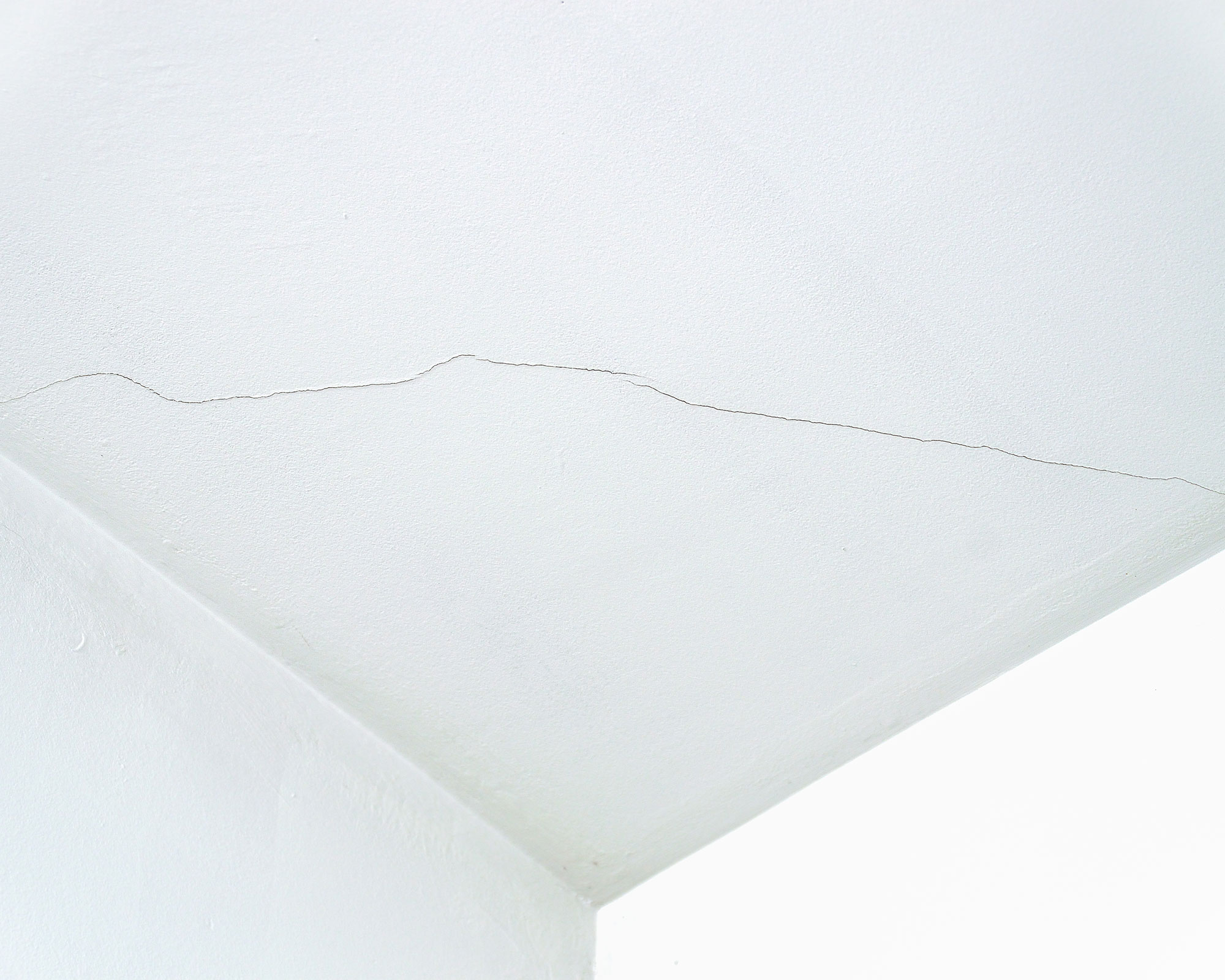Why is my ceiling cracking?
If you’re wondering to yourself ‘why is my ceiling cracking?’, this is the guide for you

If you’re asking yourself ‘why is my ceiling cracking?’, we’re going to guess you’re feeling a little concerned – did they just happen, or have they been there for years? Try not to worry. They may look dramatic, but cracks in the ceiling are not often a major concern. Regardless, it’s a good idea to investigate what’s causing them, just in case.
The first step is to work out whether the cause is simply cosmetic, or if you’re dealing with a structural issue. If it’s the latter, you’ll need to act sooner rather than later. If a repair is necessary, it’s much safer – and more cost effective – to correct it in the early stages before it becomes a bigger problem.
We’ve put together an easy guide to help you recognize warning signs that a problem may exist and work out what might be causing it.
Why is my ceiling cracking: common causes
Cracks in the ceiling aren’t necessarily a sign of structural damage. In fact, there’s a multitude of other more likely causes, nowhere near as serious.
Cracks are unsightly, in which case, you may want to remove a popcorn ceiling – so it would be best to consult our dedicated guide – or perhaps you just want to remove a textured ceiling, plaster a ceiling or patch a drywall ceiling you previously installed or inherited from your home's previous owners. Whichever, these easy step-by-step instructions will help you to understand why your ceiling is cracking so you can decide if it’s appropriate to fix ceiling cracks yourself.
If the crack in question also traverses the wall as well as the ceiling – you will want to know what causes cracks in walls to help solve the problem.
Your home is getting older
Hairline or spiderweb ceiling cracks (typically above doors and windows as well as in corners) that appear alongside similar wall cracks are most likely a sign of natural settling that happens as a building ages. This can occur at any time but is particularly common in newly built properties. ‘This is a normal process that occurs as a result of movement between the construction frames and plasterboard. The cracks may look unsightly, but they’re not a sign of serious structural damage’, says Ash Reed, interiors expert at Living Cozy.
Design expertise in your inbox – from inspiring decorating ideas and beautiful celebrity homes to practical gardening advice and shopping round-ups.
You have a moisture problem
If the cracks appear discolored, or appear alongside unsightly yellow or brown stains, you’ve likely got some water damage on your hands. In this case, knowing how to fix a ceiling with water damage is useful, however, be sure to determine the cause and fix a ceiling leak before you go about any repairs.
Your drywall wasn’t efficiently installed
Fine cracks that run in extremely straight lines are almost always the result of poor workmanship when hanging drywall ceiling. ‘If an insufficient amount of plaster is used while taping joints, the paper can begin to loosen and crack. In this instance, a very straight crack may appear, but it’s typically harmless’, says Ash.
Your roof has moved slightly
Ceiling cracks that seem to pull away from the wall can raise alarm, however, they’re likely due to something known as ‘truss uplift’ rather than serious structural damage. Trusses, which act as the frame for your roof and ceiling, tend to move a little throughout the year depending on changes in temperature or humidity. Most homes are engineered to handle this, however occasionally cracks can form.
You have structural damage
In rarer cases, ceiling cracks can be a sign of serious structural damage. This can happen for various reasons, from subsidence to the removal of a load-bearing wall, but whatever the cause, it needs immediate professional attention. Continuous cracks that run all the way across a ceiling and down a wall are red flags, especially if the crack is wider than 1/10 of an inch. Similarly, if your ceiling cracks are accompanied by a sagging roof, or there’s multiple cracks in one area.
How do you know if a ceiling crack is serious?
There are a few things you can look out for which will indicate the severity of your ceiling cracks, and how urgently the problem needs to be dealt with. Nearly all homes will develop cracks that are cosmetic in nature at some point, however, any signs of structural damage and you’ll need to act quickly. Examining the shape, size, amount and location can give invaluable insight into possible causes.
‘A good indicator of whether a ceiling crack is serious is the shape and size of it. Examples of normal, typically harmless cracks include spiderweb cracks and hairline cracks, both of which are thin and often occur due to changes in temperature or as a result of DIY work. However, if the crack is thicker than 1/10 of an inch, you should bring in a professional to inspect whether the crack is a sign of significant structural damage’, says Ash.
Glenn Wisemann, of Top Hat Home Comfort Services adds; ‘multiple cracks on the same section of ceiling can also be a sign of structural issues. It’s important to look at where the cracks have appeared. If they’re near an outlet or light fixture, they could be caused by small electric shocks, however, if they run parallel with joists or beams, structural problems may be more likely’.
Ceiling cracks, particularly those that run continuously through the wall and ceiling, become more of a red flag if there are other signs that your home may have structural problems, such as sloping floors, a sagging roof or doors and windows that won’t open properly.
How do I stop my ceiling from cracking?
When it comes to minor cracks, there’s not an awful lot you can do to stop them. Normal wear and tear – which includes foundation settling – happens naturally as a building ages.
‘If you’re worried about what it’ll mean when it comes to selling your home, rest assured; ‘thin cracks are strictly cosmetic and a future home buyer expects to see them – they won’t affect the value of your home’, says Kurt Grosse, realtor-building engineer at Realty One Group.
However, when it comes to serious cracks, prevention is most definitely better than cure according to Alexa Justine Callada at Trekroofing; ‘Have your roof inspected regularly by a professional contractor. They’ll source potential problems and fix them before they become evident, so you can rest easy knowing everything is in good shape’.
Can I fix ceiling cracks myself?
It depends on the severity. If the crack is particularly large and/or structural damage is suspected, you’ll absolutely need to call in a professional. Otherwise, minor cracks are easy enough to DIY.
‘One option is to simply scrape away cracks in the plaster using a putty knife and then repaint the area’, says Luke Lee, co-founder of Ever Wallpaper. ‘Another option is to patch up areas that are damaged using drywall compound, spackle or another lightweight material for this purpose’.

For 10 years, Tara King worked as a Content Editor in the magazine industry, before leaving to become freelance, covering interior design, wellbeing, craft and homemaking. As well as writing for Ideal Home, Style at Home, Country Homes & Interiors, Tara’s keen eye for styling combined with a passion for creating a happy – and functional – family home has led to a series of organization and cleaning features for H&G.
